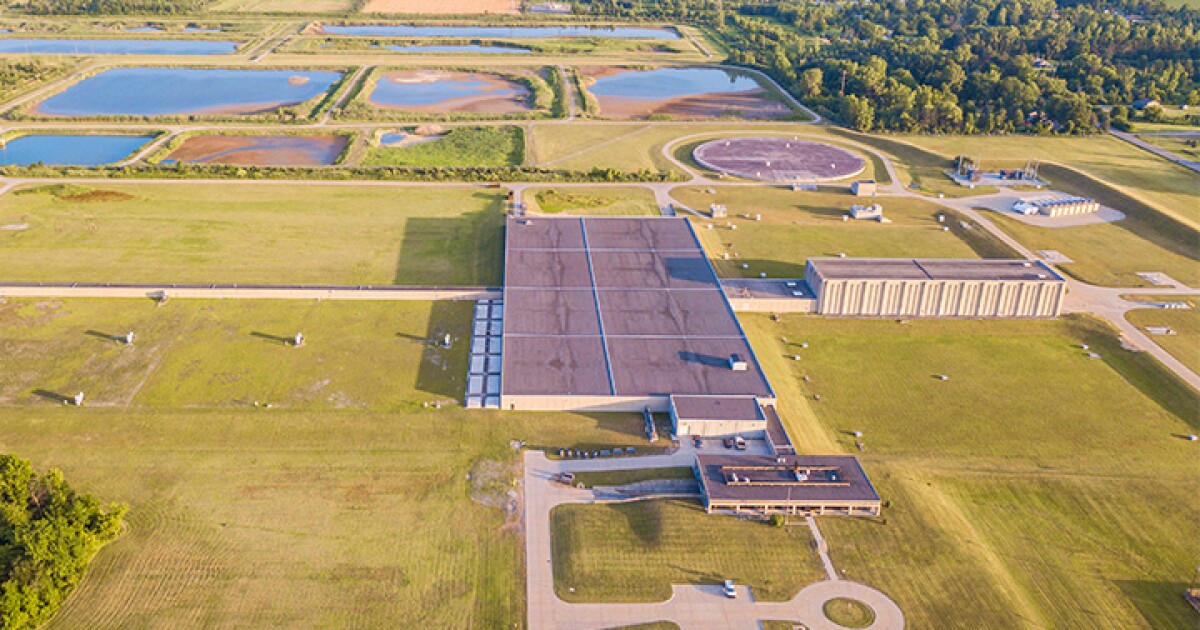Great Lakes Water Authority deal integrated bond tender
6 min read

Great Lakes Water Authority
After an upgrade from Fitch Ratings on its sewer system bonds, Michigan’s Great Lakes Water Authority went to market in June with roughly a billion dollars of bonds, part of a complex transaction that included a tender refunding.
“We’re (celebrating) our ten-year anniversary next year,” GLWA CFO Nicolette Bateson told The Bond Buyer. “With this transaction, we’re approaching nearly a billion dollars in future cash flow savings, cumulatively, from all of our transactions. And I think that just demonstrates our commitment to not just proactively manage our capital improvement program, but also proactively manage our debt program.”
The authority
On the week of June 23, GLWA issued $528.2 million of water system bonds to fund $230 million of capital improvements, refund earlier bonds and fund the purchase of tendered bonds.
The authority also issued $435.1 million of sewer system bonds to fund $50 million of capital improvements, refund bonds and fund a tender for savings.
John Carter, senior managing director at Siebert Williams Shank, senior managing underwriter on the new money and current refunding bonds, said GLWA timed its new money needs to match up with the current refunding portion of the transaction.
And when the financing team made them aware of the tender opportunity — a way to manage interest rate risk
They structured the tender, refunding and new money components in tandem, according to a presentation shared with The Bond Buyer.
The tender and current refunding were designed to create level savings through the term of the debt. And the new money component was amortized to smooth out the cash flow impact from the savings structure, with a 30-year final maturity and principal starting in 2027 for the water system and 2026 for the sewer system transaction.
“Since we didn’t know how many bonds were tendered and what the refunding savings of the tendered bonds would look like, we waited until all the tenders were in, and Great Lakes decided that they were going to accept,” Carter said. “We looked at the savings pattern from those tenders and the current refunding, and then structured the new money component so that Great Lakes could maintain its overall level debt service pattern.”
It was a complex transaction that required separate bond ordinances for the authority’s separate water and sewer systems, said Eric Brown of PFM, municipal advisor on the deal. Each of those separate ordinances included three components: the new money bonds, the current refunding and the tender refunding.
For the water system transaction, the tender and current refunding components generated $27.1 million of present value savings, according to the presentation.
For the sewer system transaction, the tender and current refunding generated $34.3 million of present value savings.
Bateson said BofA Securities, senior managing underwriter on the tender refunding, settled on a structure that incentivized investors to seize the opportunity.
“One of the things that they did is have us structure the documents so that those who were tendering their bonds would have a priority on the new bonds,” she said. “And what we saw was very strong investor participation on both the tender and the refunding.”
That strong participation showed that investors were looking to retain their exposure to the credit, Brown said.

“Part of the reason why they’re offering to sell these bonds back is that they have an expectation that the bonds would be called away from them in 2026,” he said. “And so what they’re seeking to do is actually sell these bonds back and replace them with new GLWA bonds with longer-dated maturities. And we had really good results where we saw exactly that happening. Investors who tendered their bonds sought to replace them as part of this financing.”
There were two pieces to the tender, Brown said: a taxable to tax-exempt refinancing, and a tax-exempt to tax-exempt. He said the participation rate was about 73% across the systems, among the highest for tender transactions year to date.
“It exceeded our goal, which means that when we intend to return to the market next year for new money for our capital program, we’ll be able to have further opportunities for savings, as well,” Bateson said.
The authority has a very level debt profile and works hard to keep it that way, so that rates are manageable for its customers, Carter said.
“It was a successful strategy, with high participation, but also, the investors liked the credit,” he said, noting “the way that the rating agencies have recognized the strength of the credit through several upgrades over the last several years, including the most recent upgrade.”
Ahead of the sale, Fitch upgraded the authority’s senior lien sewer debt to AA from AA-minus, and its second lien debt to AA-minus from A-plus. It also affirmed the senior lien water debt at A-plus and the second lien debt at A. The outlook is stable.
Moody’s Ratings affirmed the authority’s senior lien debt rating of Aa3 and second lien debt rating of A1 for both the water and sewer systems. S&P Global Ratings affirmed GLWA’s senior lien AA-minus rating and its second lien A-plus rating for both systems. The outlooks from both rating agencies are stable.
On this transaction, there was no deposit required for the debt service reserve fund as part of the financing, according to Brown.
“Over the course of the past decade, GLWA has implemented what’s called a springing amendment and finally, with the 2024 transaction last year, was able to eliminate their reserve fund requirement,” he said.
In 2016, the GLWA board adopted springing amendments to certain bond ordinances. Such amendments kick in only when required investor consents are obtained — which they were in GLWA’s case.
The amendments allowed the authority to cut or eliminate the reserve requirement once it had achieved ratings of AA-minus or Aa3 on the senior lien credit from two of Moody’s Ratings, Fitch and S&P Global Ratings, and had gotten confirmation that the ratings would not be downgraded due to the change in reserve requirement. The authority reached the required ratings in 2024 and chose to eliminate the reserve requirement.
“And by doing that, they were able to reduce the amount of the borrowing that would otherwise have been required here associated with that new money, by about $19 million,” Brown said.
The deal brought orders from nearly 70 unique institutional investors, and achieved the authority’s lowest ever credit spreads to municipal benchmark rates, according to the presentation.
“It’s really the culmination of a decade’s worth of effort standing up the Great Lakes Water Authority,” Brown said. “There’ve been a number of achievements… that really have built over the course of the past decade,” including the tightening credit spreads since standup, which have benefited GLWA’s member partners.
“And the financing program is an important piece of the cost picture,” he said.
Bond counsel was Dickinson Wright.
The sewer revenue bonds priced to yield from 2.86% for a 2026 maturity to 4.91% for a 2055. The bonds are callable at 10 years.
The water bonds priced to yield from 2.73% for the 2027 maturity to 4.89% for 2055.
Jessica Lerner contributed reporting.







